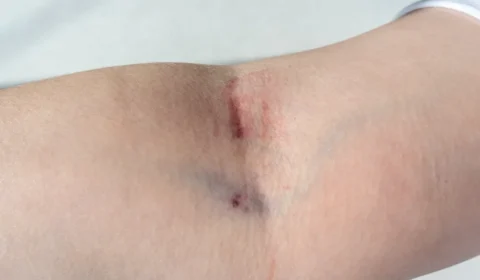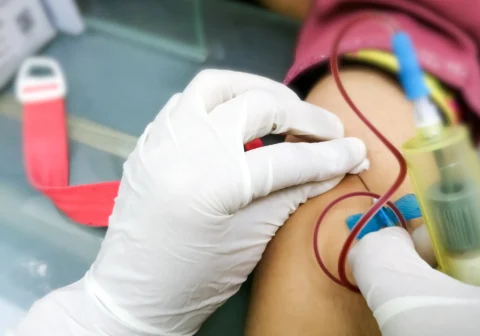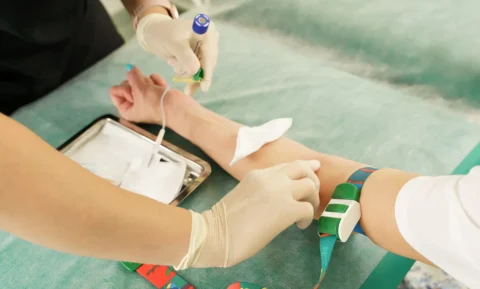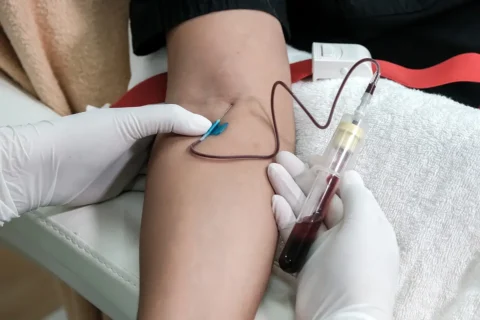A Comprehensive Guide for Medical Professionals
Have you ever had your blood drawn or an IV inserted and wished the needle was thinner and less painful? Medical professionals often use a unique type of needle called a “butterfly needle” to make these procedures more comfortable for patients.
Butterfly needles feature small, slender wings on both sides of the needle hub that help stabilize the tiny needle under the skin. Their distinctive design allows even the most delicate veins just below the surface to be easily accessed. This is ideal for pediatric patients, the elderly, and those with fragile veins who often find traditional needles too daunting.
In this article, we’ll take a closer look at how butterfly needles are used compared to standard needles, and why they have become so invaluable in healthcare settings.
The Butterfly Needles
Butterfly needles differ fundamentally in design from traditional straight needles. Their signature plastic wings are what set them apart and make them an ideal choice for many medical procedures.
Let’s examine some of the basic types of needles used in healthcare.
Butterfly Needles vs. Straight Needles
While a straight needle resembles a regular sewing needle, butterfly needles have a peculiar angled structure with thin extensions on either side. These wings help stabilize the very short, small-sized needle underneath the skin without needing extensive taping. Straight needles are often unsuitable for fragile or older patients due to their deeper insertion.
Most butterfly needles fall under the microsampling “hypodermic” needle category, featuring a chamber to draw fluid or blood internally. Their needle tubes are of Common Needle Style – the standard detachable kind used in combination with tubes, catheters, and injection devices.
Gauges
The gauge indicates the width of a needle – the smaller the gauge number, the thinner the needle diameter. Butterfly needles range from 21G to 27G and are generally thinner than standard needles. This makes them less painful and prevents unintended damage to delicate tissue.
Design
Both butterfly and regular needles used for procedures like phlebotomy are hollow to allow for blood or fluid to pass through them. However, the hollow butterfly needle is uniquely designed to glide just under the skin easily for comfortable insertion.
Components of the Butterfly Needle
While butterfly needles are simple in design, their individual parts work together seamlessly to safely deliver fluids, blood draws, and injections. This section provides an overview of the key components that comprise a standard winged needle set.
| Component | Description |
| Actual Needle | The sharp, slender hollow metal needle protrudes from the hub which pierces the skin to access veins or administer medications or fluids. |
| Flexible Transparent Tubing | A small-bore soft tube attached to the needle hub enables visual monitoring of IV fluids and connects to administration systems. Flexibility allows comfortable patient movement. |
| Butterfly Needle Connectors | A universal adapter that securely joins the tubing to IV bags or syringes without additional needles. Connectors safely cover the needle after use to prevent accidental needlestick injuries. |
| White Safety Shield | A hard plastic mechanism that isolates the needle after use to block the sharp tip, reducing health staff exposure to biohazards and needlestick injuries between procedures. |
| Slide Clamp | A compact clamp slides along the tubing to easily control fluid flow rates during infusions by altering the tubing diameter. Allows pausing or adjustment of delivery as needed. |
Butterfly Needles and Infusion: The Basics
Once veins have been accessed using a butterfly needle, various methods are used to deliver important fluids and medications into the body.
The butterfly needle, also called “winged infusion set” is used for venipuncture. It facilitates intravenous access to veins. The wings provide stability and control during insertion, making it suitable for small, fragile, or poorly accessible veins.
- Subcutaneous infusion involves delivering fluids or medications beneath the skin, commonly using pumps or infusion sets for continuous administration like insulin.
- Fluid infusion refers to direct intravenous delivery, usually through IV lines, to hydrate or administer treatments and transfusions.
- Continuous infusion is prescribed when a steady, controlled flow over extended durations is needed, as seen in critical care. This could last hours to days.
- Short-term infusion provides medication or fluids intermittently over minutes to a few hours, often for diagnostic tests or procedures requiring immediate impact.
Both subcutaneous and fluid infusions can utilize butterfly needles, while continuous and short-term infusions are started via venipuncture using the flexible wings of butterfly needles for stabilized access.
Advantages of Butterfly Needles
While traditional needles have their place in medical procedures, butterfly needles offer an array of benefits that enhance patient comfort and health outcomes.
| Benefits | Information |
| 1. Patient Comfort and Response | Butterfly needles are associated with less pain during insertion due to their small diameter. They also require minimal taping, reducing stress on fragile skin. Patients generally tolerate blood draws and IV therapy better with butterfly needles, feeling more at ease due to reduced trauma to veins. |
| 2. Suitable for Geriatric Patients and those with Superficial Veins | Their short, thin needles easily access shallow vessels near the surface like the scalp or hand veins. This makes them especially appropriate for elderly individuals with feeble veins that roll easily. Younger patients benefiting from butterfly needles commonly have underlying conditions affecting deeper vasculature. |
| 3. Excellent Alternative to Traditional Intravenous and Central Catheters | Butterfly needles provide an alternative to traditional longer IV catheters penetrating deeper into vessels. They are also less invasive than central catheters inserted into large central veins. Their external infusion ports avoid the risks of catheters traveling within the circulatory system. |
| 4. Lesser Tissue Damage and Skin Irritation | The fine, blunt tip and small diameter of butterfly needles cause minimal puncturing or shearing of fragile vessels and tissue. This helps reduce complications like infiltration, inflammation, and extravasation. Their low profile design applies less pressure to the skin, lowering the chances of irritation. |
Choosing the Right Butterfly Needle for Your Needs
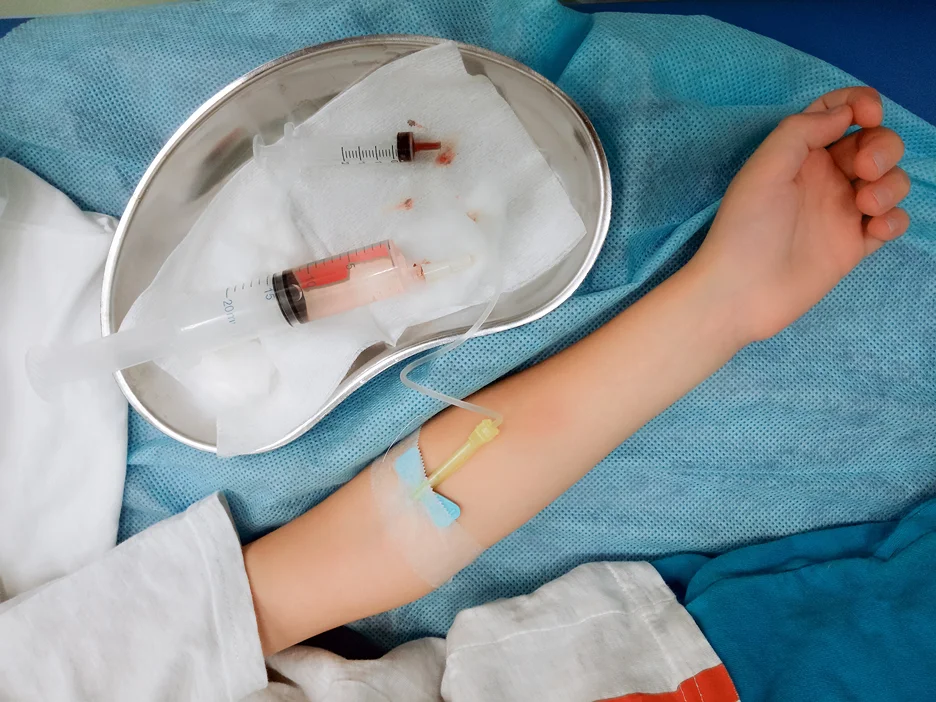
Selecting the appropriate butterfly needle involves considering factors like the patient’s characteristics and the purpose of the procedure. Let’s review some key aspects of choosing the ideal winged needle set.
Gauge Size
Butterfly needles range typically between 18-27 gauge. Larger gauges puncture more while smaller ones minimize bleeding, but are more prone to hemolysis or clotting with very small sizes.
Patient Factors
Age and vein location matter. These needles excel with children and seniors due to easy-angled insertion. Their short length enables access to fragile or deep-seated vessels.
Purpose
The use dictates gauge. Large-bore needles suit blood bank draws while higher gauges work well for patients prone to bleeding issues.
Steps to Insert a Butterfly Needle
- Assessing the vein: Evaluate suitable veins like those on the hand or arm. Avoid edematous or fragile areas.
- Skin preparation: Clean the area with an alcohol swab and check for cuts, inflammation, or lesions to avoid exacerbating skin issues.
- Choosing the angle of insertion: Typically 30-45 degrees bevel-side up for larger accessible veins. For small veins, a shallower 15-30 degree insertion angle is optimal.
- Securing the needle: Adhere to the flexible tubing holder at a 30-degree angle to support the vein while drawing blood into collection tubes to prevent leakage or blows.
- Blood collection: Depress the plunger smoothly to draw the required quantity of blood, then release and withdraw the needle safely. Apply gentle pressure to the puncture site with a cotton ball.
Tips for Difficult Draws and Difficult Sticks
- Use gravity by laying the patient down to pool blood in the veins.
- Try a smaller gauge butterfly needle for flexibility and reduced pain.
Palpate the arm to feel the underlying veins. - Apply a tourniquet snugly to anchor veins but not tightly to avoid blood component loss.
- Allow time after applying the tourniquet for veins to fill by having the patient pump their fist.
- Utilize the tactile sensitivity of butterflies by holding the hub at a 10-15 degree insertion and reducing the angle once flushed.
- Request help from colleagues if the struggle continues to locate suitable veins.
Post-Insertion Care and Considerations
Proper post-procedure protocols help identify potential complications early and prevent the worsening of existing conditions. Here are some of the things that you can do:
- Monitoring for Tissue Irritation and Edematous Tissue: Observe the puncture site for swelling, redness, or pain which could indicate early signs of tissue damage or inflammation.
- Subcutaneous Injection Site care: Alternate locations and apply light pressure afterward. Consider an anti-inflammatory if irritation occurs after insulin or medication administration.
- Changing the Butterfly Needle: Check the winged set every few hours if in use. Replace if the puncture is enlarging, starts bleeding, or infused fluid is not flowing properly to maintain a stable infusion. Ensure disposal of used needles in a sharps container.
Tailored Tools for Safer, High-Quality Patient Care
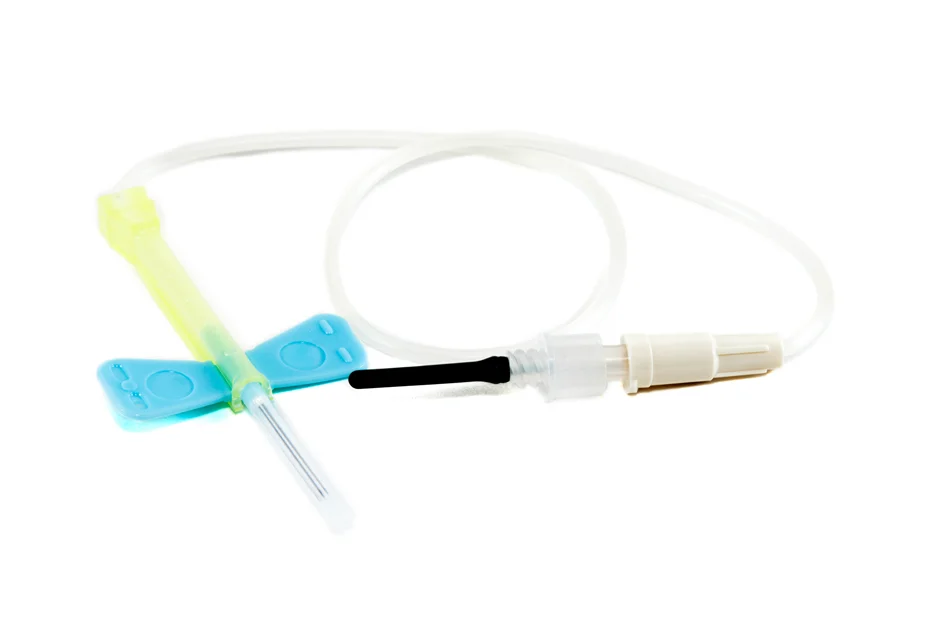
In this overview, we explored the various aspects of butterfly needles – from their components and design advantages to insertion techniques and considerations for different patient profiles. As specialized medical tools, it is crucial that healthcare providers fully understand how to appropriately select and safely employ winged sets.
For healthcare facilities or individual clinicians seeking to incorporate high-quality butterfly needle products into their practice, don’t hesitate to reach out to Face Med Store.
Our team can answer any outstanding questions to facilitate the confident use of these invaluable phlebotomy and infusion tools. Working together, we can help foster quality healthcare enabled by precision tools like versatile butterfly needles.
